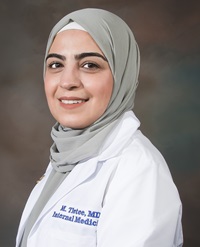
Special to Iredell Free News
Imagine your body begins moving in ways you didn’t intend — your hands start to tremble, your steps falter. Simple everyday tasks like pouring a cup of coffee or buttoning your shirt become difficult challenges. This is the reality for those with Parkinson’s disease, a neurological condition that affects movement, speech, and daily life.
The National Institute of Neurological Disorders and Stroke reports that approximately 500,000 Americans are diagnosed with Parkinson’s, but given that many individuals go undiagnosed or are misdiagnosed, the actual number is likely much higher. Some experts estimate that as many as 1 million Americans have Parkinson’s disease.
April is Parkinson’s Awareness Month – a time to learn more about this common, yet often misunderstood disease.
What is Parkinson’s disease?
“Parkinson’s disease is a progressive nervous system disorder that affects movement, typically beginning with a slight tremor in one hand and gradually leading to stiffness, slowed movement, and difficulties with balance and coordination,” said Dr. Maria Tletee, a physician at Iredell Internal Medicine.

It is a chronic disease that slowly destroys brain cells that produce a chemical called dopamine. Dopamine helps the brain direct muscles and limbs to move more purposefully and smoothly.
“The exact cause of Parkinson’s disease is unknown, but it is believed to result from a combination of genetic and environmental factors. Changes in certain brain cells, particularly those involved in dopamine production, are thought to play a central role in its development,” said Tletee. “Environmental factors such as pesticide exposure, air pollution, high consumption of dairy products, and living in urban or industrial areas with elevated levels of copper or lead may also contribute to its onset.”
According to Tletee, Parkinson’s disease can affect anyone, but is most commonly diagnosed in individuals over the age of 60. Males are at a higher risk than females, and a family history of the disease in a first-degree relative increases the risk two to threefold.
Warning Signs
The symptoms of Parkinson’s differ from person to person. Early symptoms of this disease are subtle and occur gradually. According to the National Institute on Aging (NIA), friends or family members may be the first to notice changes in someone with early Parkinson’s. They may notice that they speak too softly or that their handwriting is becoming small and cramped. They also may notice tremors or that the person’s face lacks expression or animation. Another possible early sign of Parkinson’s disease is a decreased sense of smell, called hyposmia.
“Before the onset of classic symptoms, individuals with Parkinson’s disease may experience several non-motor symptoms such as rapid eye movement sleep behavior disorder, constipation, and olfactory dysfunction. Other early warning signs include urinary urgency, sexual dysfunction, depression, anxiety, and color vision impairment,” said Tletee.
Parkinson’s disease progression varies among individuals. The symptoms and severity vary as well. Not all people will experience the same symptoms. Symptoms often begin on one side of the body. As the disease progresses, it eventually affects both sides.
“The four main motor symptoms of Parkinson’s disease include tremors, slowness of movement, rigidity or stiffness, and impaired balance or coordination,” said Tletee.
People with Parkinson’s may develop a slouched or hunched appearance, with shoulders drooped and head hanging down. As the disease progresses, some people may not be able to walk easily.
Treatments
While there’s currently no cure for Parkinson’s disease, several treatments aim to manage symptoms and improve quality of life. According to Tletee, these may include medications to increase dopamine levels, physical therapy, speech therapy, and in some cases, surgery.
“Parkinson’s disease can significantly impact both individuals and their families, but with proper management and support, many people can maintain a good quality of life for years after diagnosis. It’s important for both patients and caregivers to seek out support networks and resources to navigate the challenges of living with Parkinson’s,” said Tletee.
LEARN MORE
Dr. Maria Tletee practices at Iredell Internal Medicine, located at 757 Bryant Street in Statesville, and is accepting new patients. If you would like to schedule an appointment with Dr. Tletee, call the office at 704-873-5658.
About Iredell Health System
Iredell Health System includes Iredell Memorial Hospital; Iredell Mooresville; two urgent care centers; Iredell Home Health; Iredell Wound Care & Hyperbaric Center; Community and Corporate Wellness; Occupational Medicine; the Iredell Physician Network and more. Iredell Memorial Hospital is the largest and only nonprofit hospital in Iredell County. The comprehensive healthcare facility has 247 beds; more than 1,800 employees; and has 260 physicians representing various specialties. Centers of excellence include Women’s and Children’s; Cardiovascular; Cancer; Surgical Services and Wellness & Prevention. The Health System’s second campus, Iredell Mooresville, is home to the area’s only 24-hour urgent care facility, as well as an ambulatory surgery center, imaging center, rehabilitation services, and physician practices. The mission of Iredell Health System is to inspire wellbeing. For a comprehensive list of services and programs, visit www.iredellhealth.org.



